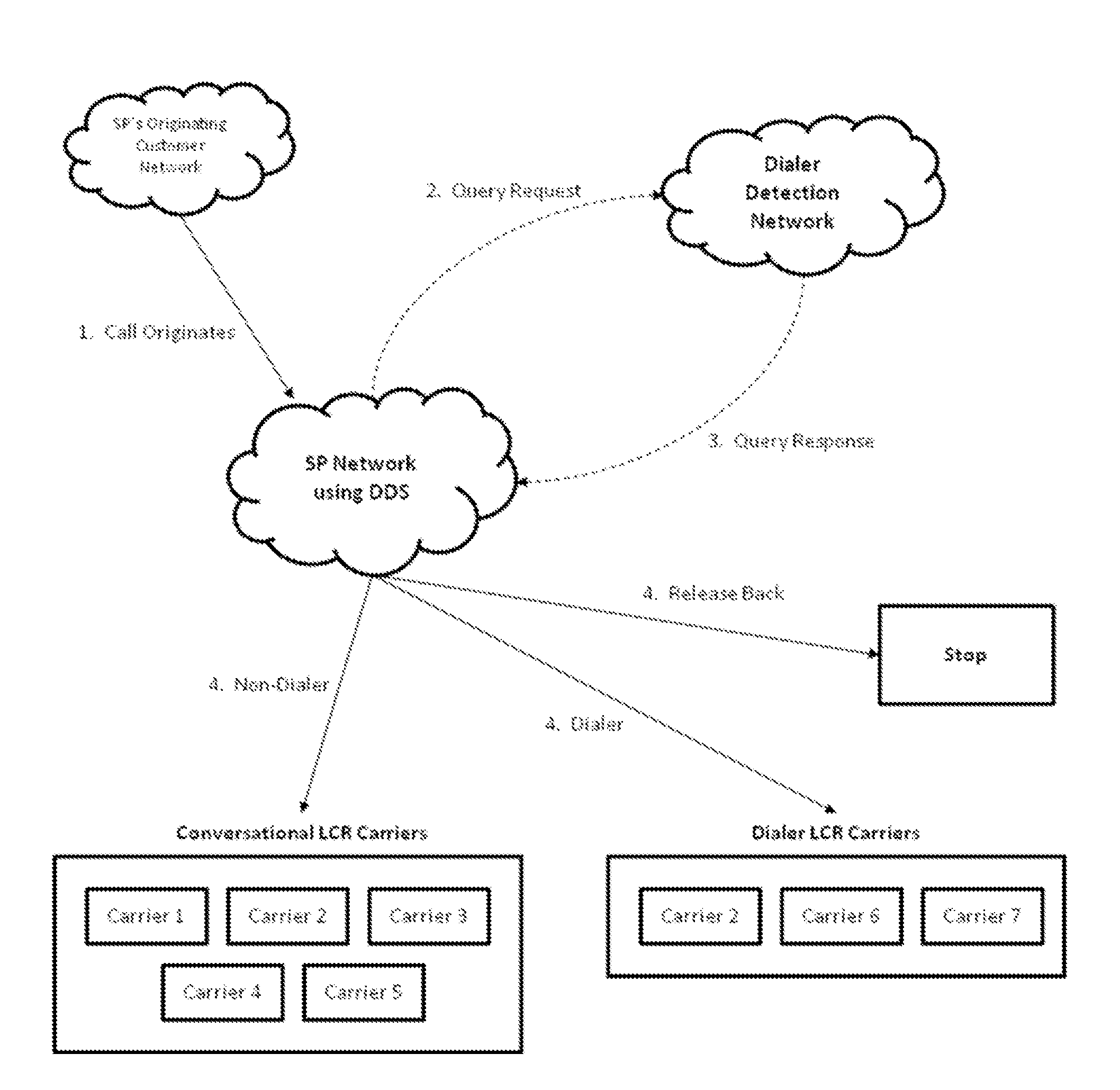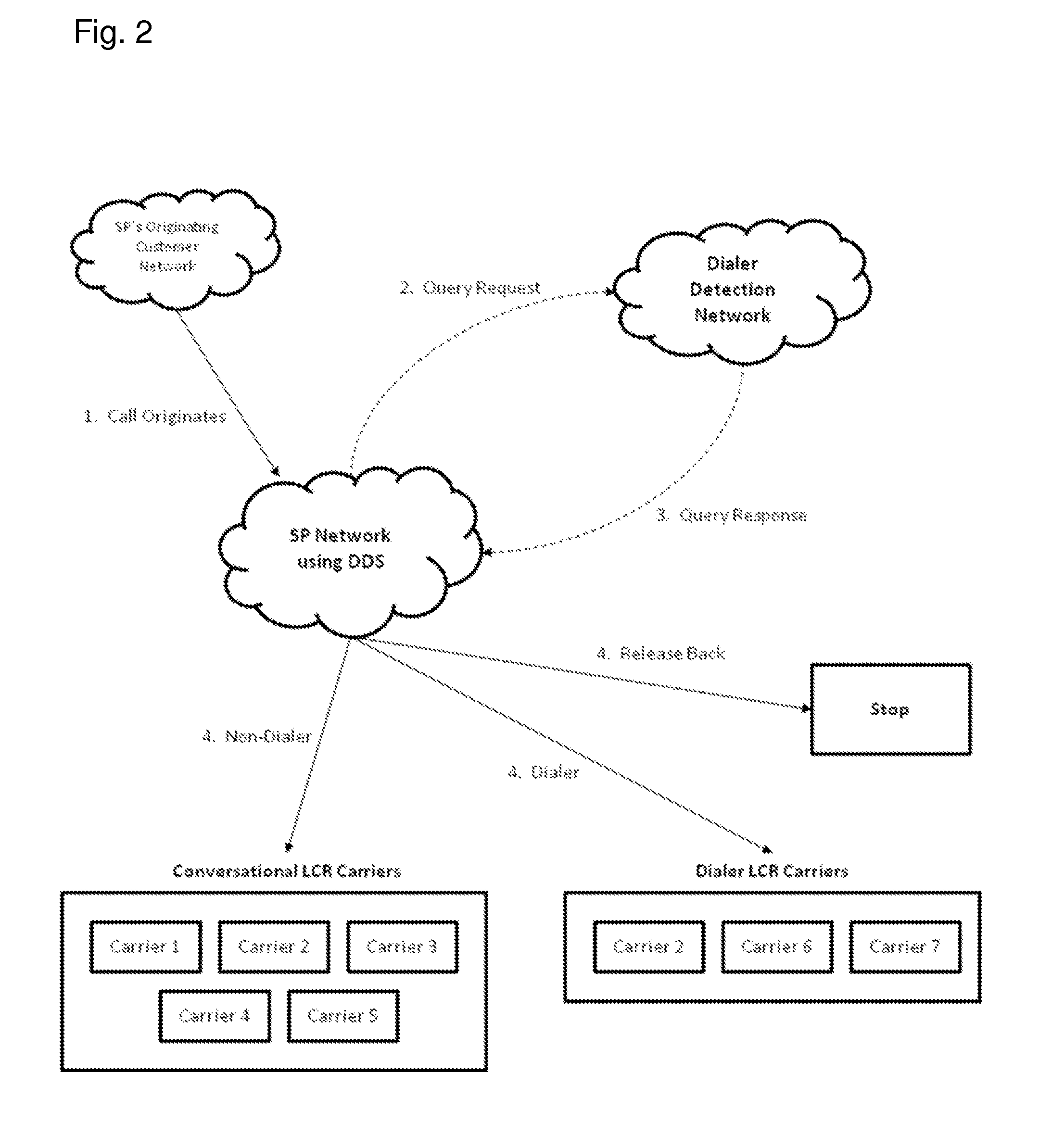Dialer Detection and Conversational Traffic Differentiation for the Purpose of Optimal Call Termination
a conversational traffic and dialer detection technology, applied in the field of voice telephony communications, can solve the problems of negative impact on the telecommunications infrastructure, increased negative cost impact, termination provider does not generate acceptable revenue, etc., and achieve the effect of maximizing the profitability of the sp
- Summary
- Abstract
- Description
- Claims
- Application Information
AI Technical Summary
Benefits of technology
Problems solved by technology
Method used
Image
Examples
Embodiment Construction
[0017]Acronyms:
[0018]ANI—Automatic Number Identification (which is the “calling” or “originating” telephone number)
[0019]CPS—Calls per Second
[0020]DDS—Dialer Detection System
[0021]LCR—Least Cost Routing
[0022]RG—Resource Group. Generic term which refers to a specific IP address, or group of IP addresses, a Trunk Group, or any other physical or logical entity which originates or terminates telephone calls.
[0023]SP—Service Provider
[0024]The invention allows a telecommunications SP, which uses DDS, to differentiate dialer traffic from conversational traffic and to divert the dialer traffic and / or to block or release it. This gives the SP the capability to route the dialer calls only to those carriers that offer favorable rate conditions for dialer traffic (some terminating carriers specialize in handling dialer traffic), and to route the conversational calls to a large superset of least cost routing carriers. Additionally, the invention allows the SP to block the dialer type traffic, in...
PUM
 Login to View More
Login to View More Abstract
Description
Claims
Application Information
 Login to View More
Login to View More - R&D
- Intellectual Property
- Life Sciences
- Materials
- Tech Scout
- Unparalleled Data Quality
- Higher Quality Content
- 60% Fewer Hallucinations
Browse by: Latest US Patents, China's latest patents, Technical Efficacy Thesaurus, Application Domain, Technology Topic, Popular Technical Reports.
© 2025 PatSnap. All rights reserved.Legal|Privacy policy|Modern Slavery Act Transparency Statement|Sitemap|About US| Contact US: help@patsnap.com



